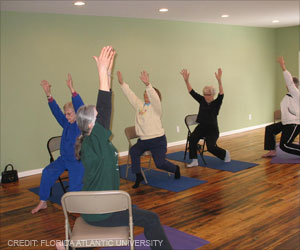Clearing of old/senescent cells reduces the development of osteoarthritis and creates an environment for regeneration of new tissue.
Highlights
- Senescent cells accumulate in the joints during aging, but fail to get cleared from articular joints like knee, which triggers the process of degradation and development of osteoarthritis.
- Experimental drug UBX0101 has shown to reduce the number of senescent cells that accumulate in the joints.
- The drug also activated genes that were associated with growth of new cartilage, which could help in repairing joints.
TOP INSIGHT
The experimental drug UBX0101 reduces the number of senescent cells that cause tissue damage, it also encourages the growth of new cartilage and repairs joints.
- reduces the development of post-traumatic osteoarthritis
- creates an environment for the growth of new cartilage and repairs joints.
But the senescent cells are not cleared as easily from the injured area especially in articular joints such as the knee. And their prolonged presence triggers a cascade of events for the development of osteoarthritis.
"Combine age-related increases in senescent cells, plus trauma, and it's a double whammy," says Jennifer Elisseeff, Ph.D., director of the translational tissue engineering center and Morton Goldberg Professor of Ophthalmology at the Johns Hopkins Wilmer Eye Institute.
Osteoarthritis affects nearly 27 million Americans over the age of 25 years.
Injecting Experimental Drugs
A 50% reduction in the presence of senescent cells was induced by the drug. Gene expression revealed that the genes that were associated with reparative cartilage growth were activated in the treated mice.
The same drug was injected in older mice that had thinner cartilages in their joints and increased level of pain.
After injection with UBX0101, the level of pain was reduced in the older mice although they failed to exhibit signs of cartilage regeneration.
Translation to Treating Humans
To understand how UBX0101 would work on humans, cultures of human cartilage cells from donors who have severe osteoarthritis were grown into 3D structures in the lab.
The 3D structures which mimic the growth of cartilage tissues in the body, were then exposed to the drug for four days.
The results showed that the number of senescent cells dramatically reduced which also encouraged the growth of new cartilage and tissue repair.
"What was most striking about the results in human tissue is the fact that removal of senescent cells had a profound effect on tissue from very advanced osteoarthritis patients, suggesting that even patients with advanced disease could benefit," says Elisseeff.
Elisseeff explains, "Because the drug targets and kills the senescent cells directly, once they are eliminated, patients will not need to return for frequent treatments."
"The promising results from this collaboration between Johns Hopkins and Unity showcase how industry and academia can work together to develop innovative therapies," says Neil Veloso, JHTV's executive director of technology transfer. "We are excited that the results from this collaboration may develop into a product that will positively impact people around the world."
The findings are published in Nature Medicine.
References
- Handout on Health: Osteoarthritis - (https://www.niams.nih.gov/Health_Info/Osteoarthritis/default.asp)
- Jennifer Elisseeff et al. Local clearance of senescent cells attenuates the development of post-traumatic osteoarthritis and creates a pro-regenerative environment. Nature Medicine; (2017) doi:10.1038/nm.4324
Source-Medindia
 MEDINDIA
MEDINDIA




 Email
Email










